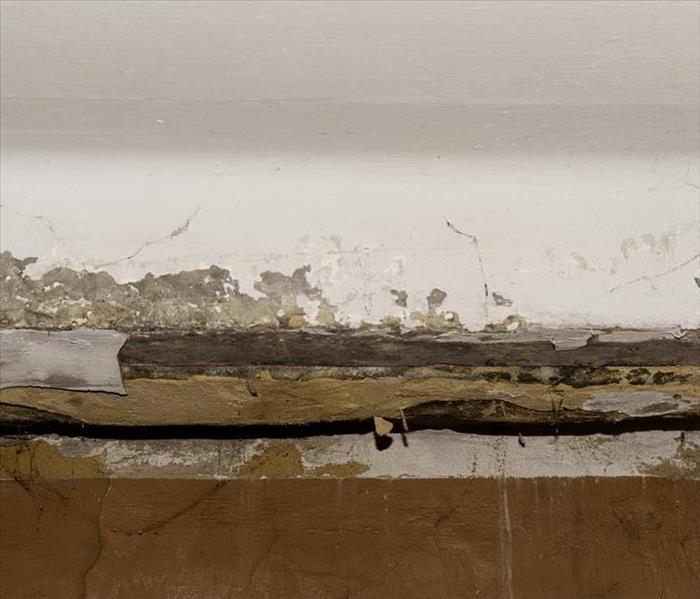How Does Water Affect Building Materials?
4/9/2022 (Permalink)
Discovering water damage in your Ogden, UT, home can be overwhelming. Sometimes it can even be more stressful than the disaster that initially led to the loss. Excess moisture can cause various types of deterioration; the structural makeup of the affected material is a huge factor in determining the extent of the damage. Some materials are much more absorbent than others.
Unfortunately, many materials used to build homes are quite porous. These materials include wood, drywall and insulation. Considerable damage can result from the intrusion of excess water from a flood, burst pipe, leaking roof or another catastrophe. What if this happens in your home?
6 Steps for Dealing With Water-Damaged Materials
Unfortunately, every second counts when it comes to water's effect on many materials. This means that it will probably be impossible to prevent some loss. Therefore, the focus will be on mitigating the deterioration. There are some basic steps to take to lessen the risk of significant damage after a water disaster.
1. Shut Off the Electricity
First, remember to shut off the electricity to the affected area. Even very shallow standing water can carry an electric current that can harm you on contact.
2. Extract Standing Water
It's essential to extract all excess water as quickly as possible. Typically, the best way to do this is to use a wet/dry vacuum. Unlike a regular vacuum or mop, a wet/dry vacuum also lets you safely and efficiently remove wet debris.
3. Remove Flooring Materials
Your flooring will probably not be salvageable if you've had standing water. Water-soaked wood floors can swell and buckle if they are left to sit. Carpeting and padding typically won't be salvageable if saturated because they are usually impossible to dry completely quickly enough to prevent damage. You will also need to inspect the subfloor, dry it, or replace it before reinstalling flooring.
4. Tear Out Wet Drywall and Insulation
Soaked drywall and insulation should be torn out and replaced. Drywall is very porous and can soak up water like a sponge. It can be extremely tough to dry entirely in time to prevent permanent water damage and mold growth. Wood cabinets can also swell with water and must be replaced.
5. Begin Drying the Affected Area and Contents
First, you will need to remove anything that isn't salvageable to eliminate as much excess moisture as possible. Mold can begin growing within 24 hours, so it's essential to use multiple drying techniques. There are several ways to dry the area and contents: fans, heaters, dehumidifiers. You can also open doors and windows to allow fresh air to flow through, as long as the humidity outdoors is lower than indoors.
6. Call the Professionals
You will need to hire flood damage restoration professionals to thoroughly inspect the area and clean and sanitize it. After the plumbing repair, the remediation experts will ensure that everything is completely dry and free of mold growth. Ultimately, they will return the site to its pre-flood condition and perform a final inspection.
Floodwaters from a disaster, such as a supply line leak, can begin showing water damage immediately. Knowing the steps to take after a flood is vital to your family's safety and your home's security.




 24/7 Emergency Service
24/7 Emergency Service
